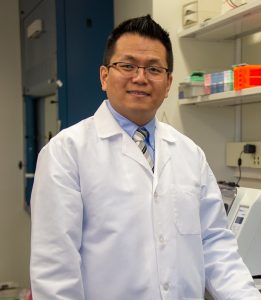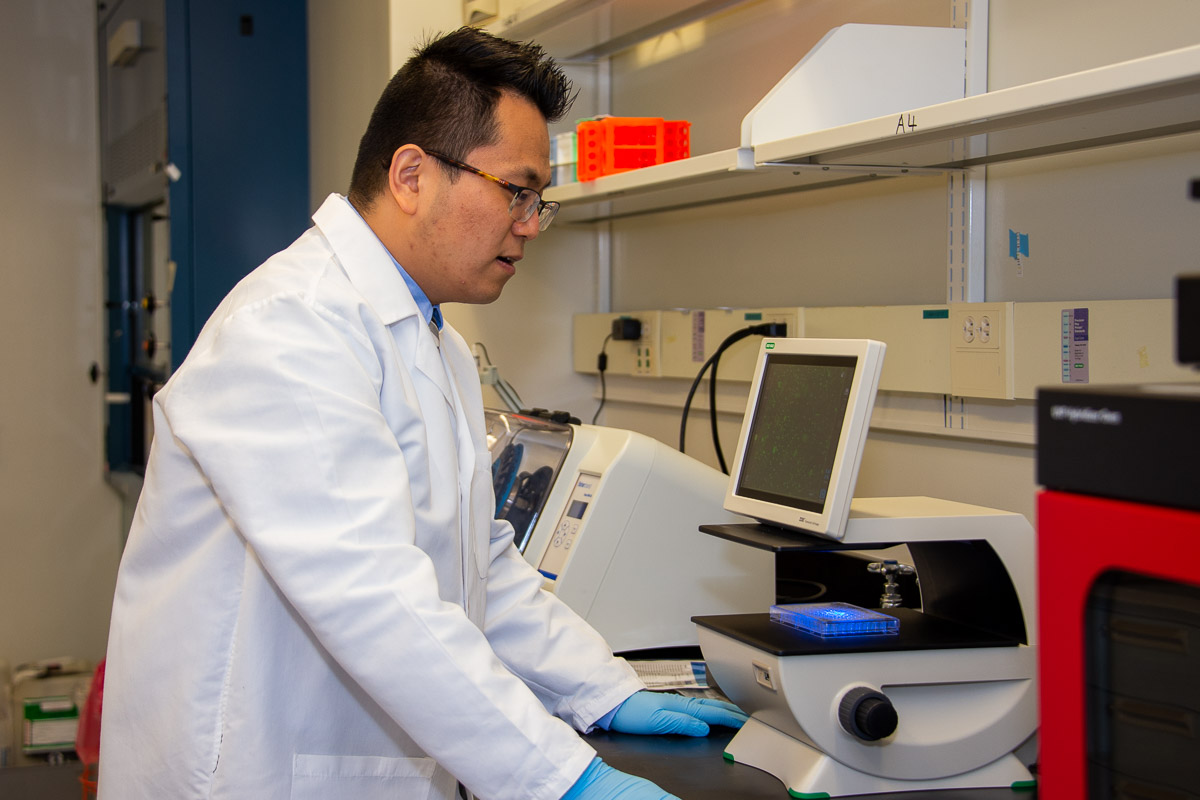This summer Ming Xu, Ph.D. joined the UConn Center on Aging at UConn Health as a new faculty member and researcher hailing from the Mayo Clinic. UConn Today sat down with Xu to discuss his new exciting research findings published this July in Nature Medicine and his research mission to help promote healthy aging by not only adding years to one’s life, but also increasing healthspan during those extra years to ensure a high level of function and independence.
Q. Dr. Xu, welcome to UConn Health. What is your research expertise?
A. My research interest involves the understanding of the underlying mechanism of aging and metabolism-related tissue dysfunction and disease. I am focused on finding therapeutic targets for combating aging and age-related diseases such as frailty, osteoporosis, and metabolic dysfunction.

Q. Tell us about your training and career?
A. My education and research experience provided me with excellent research background including cellular and molecular biology, biochemistry and animal study. I received my bachelor degree in biological sciences from Fudan University, one of the top three universities in China. After two years of experience in working with embryonic stem cells as a research assistant, I did my graduate studies at the University of Kansas Medical Center. As a predoctoral student, I mainly worked on metabolism research using both animal and cell models and had several journal publications. For my postdoctoral training the past six years I worked with Dr. James Kirkland at the Mayo Clinic to examine the underlying mechanisms of aging.
Q. What is your biggest research discovery so far?
A. Our National Institute of Aging NIH-funded research while at the Mayo Clinic found that aging results in cellular senescence that contributes to the decline or deterioration of cell function in a range of tissues. With aging senescent cells increase in many tissues, are associated with many chronic diseases, and occur after cancer care involving radiation or chemotherapy. Also, our research discovered that clearing senescent cells through genetic and pharmacological approaches even starting in late-life can indeed enhance both lifespan and healthspan in mice.
Q. What do the brand new study findings published in Nature Medicine show?
A. In this new Nature Medicine study that I served as first and co-corresponding author on with senior author James Kirkland of the Mayo Clinic, we found that a relatively small number of senescent cells induce age-related physical dysfunction in young mice. Senescent cells were shown to reduce physical function and lifespan in mice. But our experimental combination of simply injecting two existing drugs (dasatinib and quercetin) intermittently were shown to pack a strong double-punch to not only clear the harmful senescent cells from tissues but restored the mice’s physical function and extended their lifespan and healthspan. Walking speed, muscle strength, physical endurance, daily activity, food intake, and body weight were all improved. The drug-combo also helped older mice have a 36 percent increased average post-treatment lifespan.
Q. How could these exciting basic science study findings be translated to help the human aging process?
A. Our study finding shows promising evidence that it may be possible to extend the human lifespan and healthspan by pharmacological intervention, even when the treatment started later in life. This finding is very exciting since it might have the potential to be translated eventually into the treatment of 70-80 year old humans with senolytic drugs intermittently to extend their remaining functional lifespan by 5-6 years based on the calculation using mouse and human average lifespan. This might significantly help improve life quality in older adults and even reduce health expense. However, it is important to stress that individuals should not be taking these drugs hoping to slow aging at this moment. Careful clinical trials in people are needed to better to understand these results. The goal is to someday soon test our promising intervention further in human clinical trials in older adults and those with cancer and other chronic diseases.
Q. How will you build on these latest research findings at UConn Center on Aging?
A. As a new assistant professor at the UConn Center on Aging my lab research will mainly use novel animal models and human cell transplantation models to further study the underlying mechanisms by which senescent cells induce tissue dysfunction. My long term career goal is to develop other promising drug interventions to enhance healthy aging in human populations.



